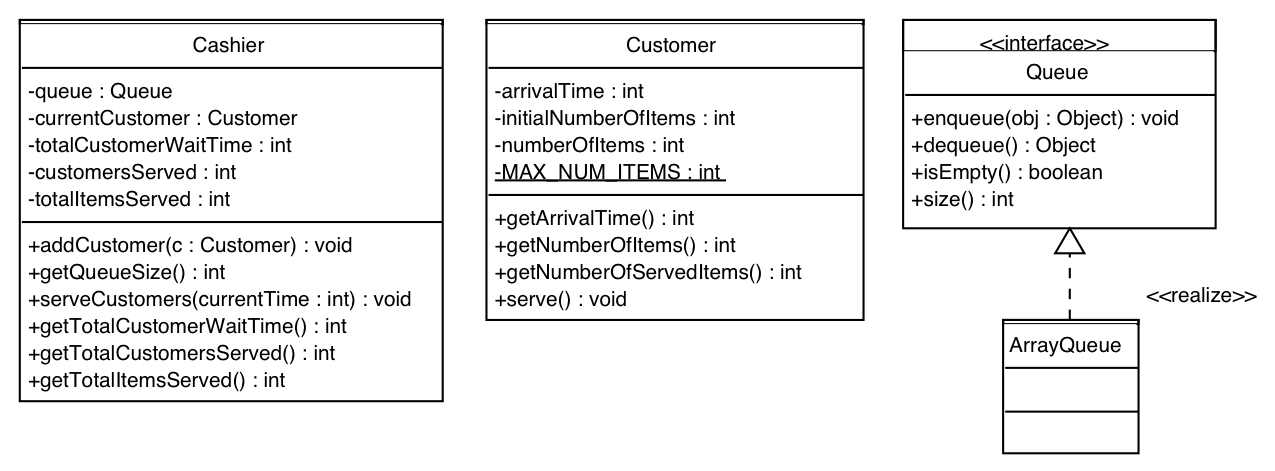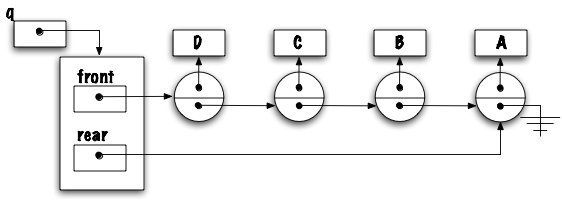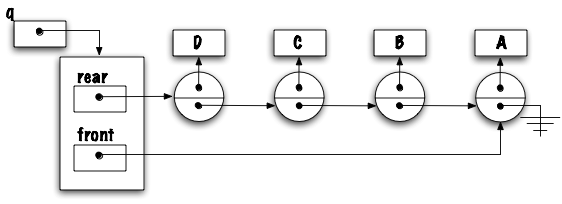
We all know of many applications of queues in “real-world” situations. A prime example is the waiting lines. In order to improve customer service, techniques are sought to reduce the average waiting time, or the average length of the queue. For airlines companies, this could be to have waiting lines for regular customers, as well as waiting lines for the frequent flyers. For a supermarket, this would the use of express lines for customers with few items, as well as regular waiting lines.
However, in order to select the best strategy, e.g. adding 1, 2 or 3 express lines, managers need tools to estimate the value of certain parameters, such as the average waiting time, so as to implement cost effective solutions.
The are two main approaches to obtain these estimates. Queuing theory is a branch of mathematics that studies waiting lines. The alternative is to build computer simulations of these “real-world” systems, and measure the values of the parameters with help of the simulations.
For this laboratory, we are developing a computer simulation for a supermarket that has express and regular lines. These waiting lines will be implemented with help of queues.

The above figure shows the UML diagrams of the two main classes for the simulation. In addition to these classes, there is an interface, called Queue, as well as a simple implementation, called ArrayQueue. The source code can be found here:
As with most simulations, assumptions have to made to simplify the writing of computer programs.
The content of this laboratory has been adapted from Lambert and Osborne (2004) Java: A Framework for Program Design and Data Structures. Brooks/Coles, pages 266–274. You will find below the description of all the classes required for the simulation.
Write a class for modeling a customer. A customer knows its arrival time, its initial number of items, as well as the number of items remaining to be processed. The maximum number of items per customer is (MAX_NUM_ITEMS).
What are the instance variables? What are the class variables?
The constructor has a single parameter. It specifies the arrival time. The initial number of items is determined when the object is first created using the following formula:
Since, Math.random() generates a random number greater than or equal to 0.0 and less than 1.0, the expression MAX_NUM_ITEMS * Math.random() generates a number greater than or equals to 0.0 and less than MAX_NUM_ITEMS, adding 1 ensures that the number of items is greater than or equals to 1.0 but lower than MAX_NUM_ITEMS 1+. This real value is then converted to an int, in the range 1 to MAX_NUM_ITEMS , few! (here, I wanted to make sure that no customer would show up empty handed).
The instance methods of a customer include:
A cashier is responsible for helping a queue of customers. It serves one customer at a time. Since the simulation is used to produce statistics, a cashier also memorizes the total number of customers served, the total amount of time the customers have been waiting, as well as the total number of items served (processed).
What are the instance variables? What are the class variables?
The class has a single constructor. It has no parameters. It initializes the instance variables of the cashier.
The method addCustomer( Customer c ) adds a customer to the rear of its queue. The method int getQueueSize() returns the number of customers currently waiting in line.
The method serveCustomers( int currentTime ) is a key element of the simulation. The method serveCustomers of each cashier is called once for each step of the simulation. The parameter currentTime is used to compute the total amount of time this customer has spent waiting in line. Here is the behaviour of the cashier when serving customers.
There are also 3 instance methods used to report statistics for the total waiting time, total number of items served and total number of customers served by this cashier: int getTotalCustomerWaitTime(), int getTotalItemsServed(), and int getTotalCustomersServed(). Finally, the String toString() method returns a String that summarizes the statistics of this cashier.
The class Simulation orchestrates the simulation. A Simulation object has two cashiers, one is responsible for the express line, the other for the regular line. The object also memorizes the duration of the simulation. The constructor the creates the two necessary cashier objects.
The method run() implements the main loop of the simulation. It sets the current time to zero then increments the current time by a fixed amount (TICK) at each iteration.
At each iteration, the method run must:
At the end of the simulation, the method run() displays the statistics.
For the implementation of queue using linked elements, which of the following two implementations is preferable and why?


Last Modified: March 5, 2014